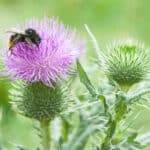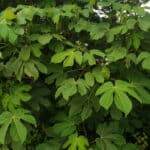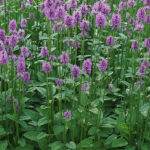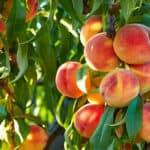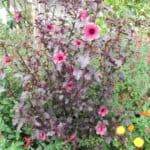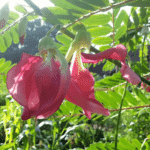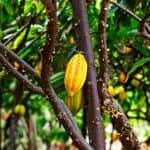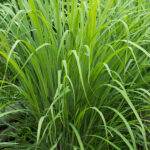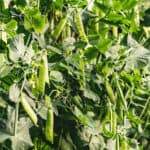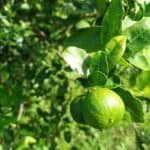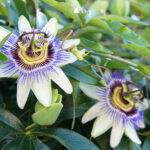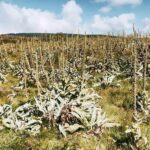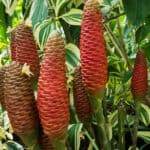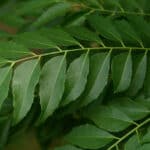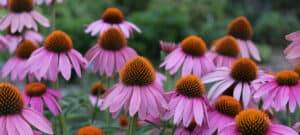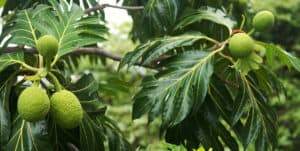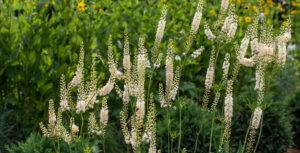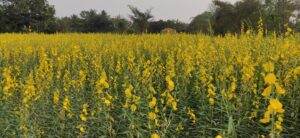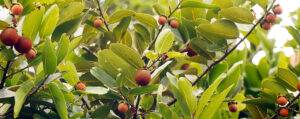Black Pepper Growing Tips from the Land of its Origin!
These tiny flavor bombs need no introduction. It’s almost impossible not to have come across black pepper in some form or another. However, did you know that Black Pepper, when harvested, is green, pink, and red in color?
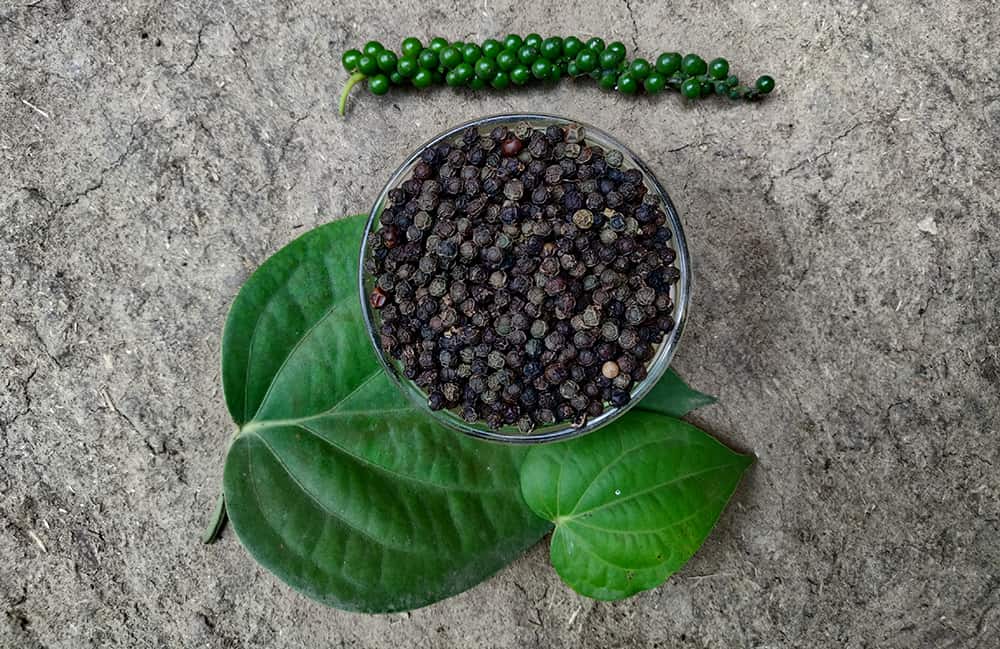
Black Pepper is the fruit of the Piper nigrum vine, it’s a flowering, perennial vine in the Piperaceae family. Peppercorn is green when raw and unripe, red or pink when ripe, and turns black, white, or dark green when processed and preserved with different techniques.
Growing up, I spotted Black Pepper vines in various backyard food forests and traditional kitchen gardens around the Western Ghats of India. And yes! The colorful harvests of black pepper can be consumed in all of the above stages, being delicious in each form!
It’s native to the Western Ghats of India, and the origin is more specifically known as the Malabar coastal region, which is now the state of Kerala. It grows in tropical wet and dry zones and thus is highly cultivated in Vietnam, China, Thailand, Indonesia, Malaysia, Sri Lanka, and Brazil.
We call it Kali Miri in Marathi and Kali Mirch in Hindi. It’s called Kurumulaku in Malayalam and Milagu in Tamil.
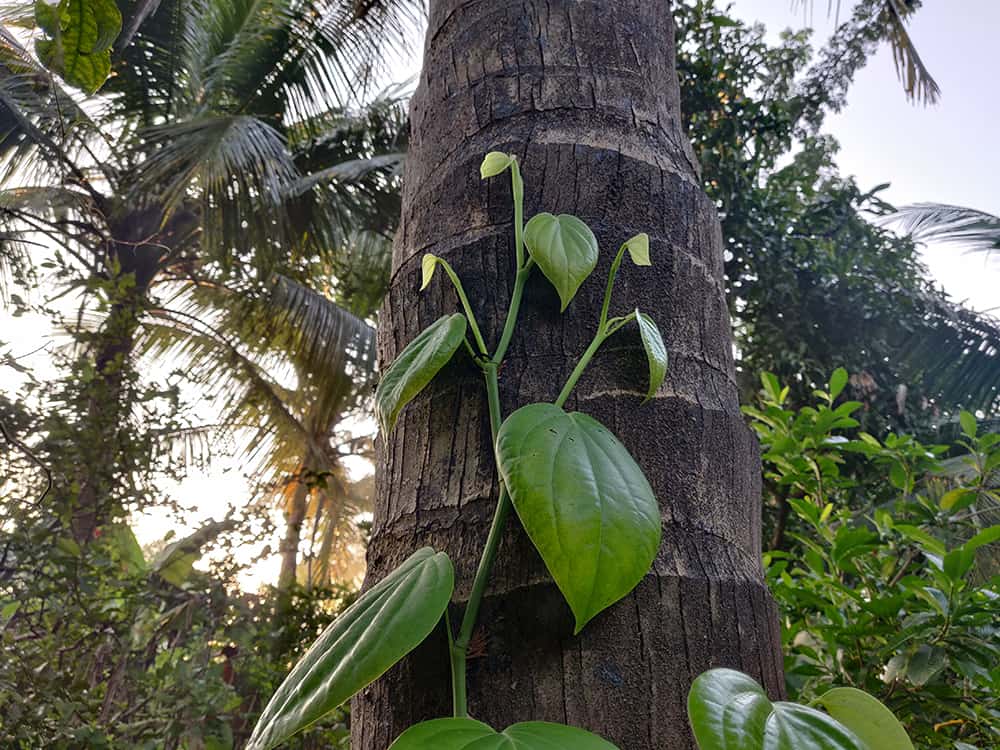
The stem is woody and bushy and the leaves are oval in shape. The height of the wild vine (untamed) can go up to 30 to 35 feet high on the supporting tree however, in cultivated systems, it’s maintained at 5 to 10 feet height for maintenance and easy access. It can live up to 30+ years.
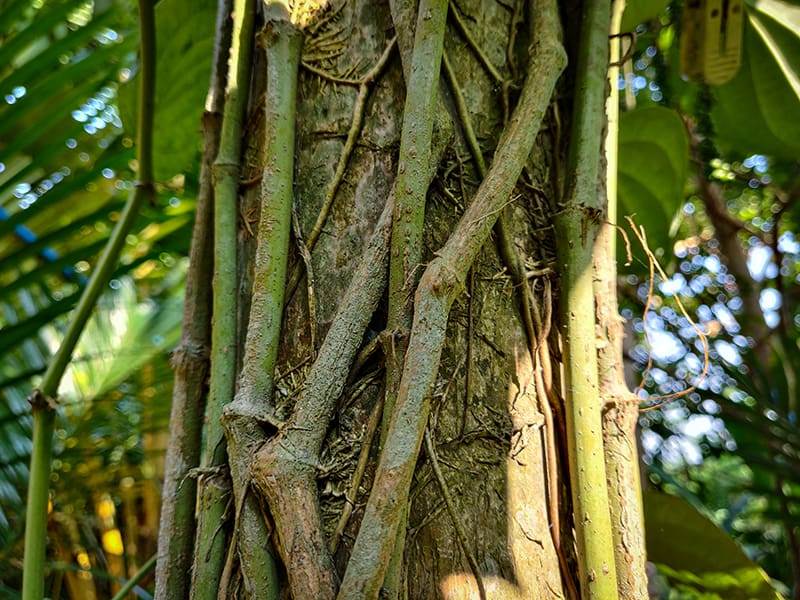
It’s common to spot them growing on areca nut, mango, coconut, or other fruit trees with minimal maintenance within the hot and humid tropical zones of India.
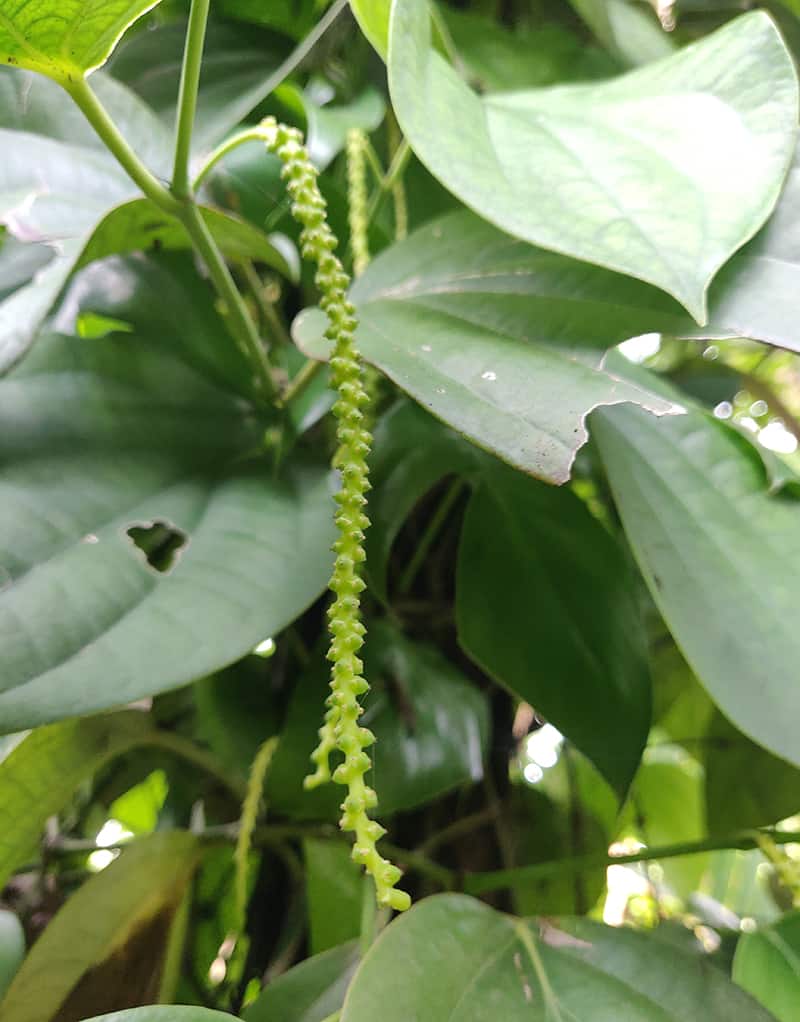
The flowers grow in clusters, they are white in color, and the fruits form in drupes.
Black Pepper is one of the first perennial vines we included in our food forest – Mrittika, and from an experience of 10 odd years of growing and harvesting, I’ll recommend giving growing pepper a try as, once established, the benefits it provides to your space and health are pretty amazing!
Also, the plant looks really cute and gives a nice tropical feel, thus can be considered for beautification purposes in addition to obtaining a yield, so it’s a win-win.
So why limit yourself to only consuming dry peppercorns when they can be used in various stages? Let the regenerative properties of black pepper add another layer to your food forests and gardens. Their coexistence with other trees and ability to attract birds and bees is a value add to your permaculture guilds as well!
Medicinal Importance of Black Pepper
Since pre-historic times, black pepper has been used in Indian recipes and as a general medicine.
In Ayurveda, it is known and used as a bioavailability enhancer as it has the potential to fight free radicals while also improving digestion and absorption of beneficial compounds. This comes from the piperine compound, the one which gives black pepper its spicy complex flavor as well.
It’s one of the reasons why black pepper is added to the traditional Indian spice mix, it helps improve the nutrient absorption of the rest of the herbs and spices. They are an integral part of our diet.
It is also known for its anti-inflammatory properties and is consumed persistently in smaller quantities to treat various seasonal flu, fever, cold, headaches, and stomach worms. It also helps improve blood circulation.
The essential oil extracted from pepper contains antiseptic, antibacterial and febrifuge properties. It has high commercial value and is used in skin care products as well.
Traditional Medicinal Uses
The preparation of crushed black pepper and jaggery is taken orally to treat indigestion.
During cold and fever, a decoction made of 2 – 3 peppercorns, 1 – 2 cloves, a little ginger, and 2 – 3 holy basil leaves (honey is added after cooling the decoction a bit) is given as a tea once or twice a day.
Black Pepper powder is mixed with an equal amount of sea salt to treat gum inflammation and pyorrhoea. It is massaged gently on the gums and gargled until the inflammation heals.
Peppercorn and clove are placed in between teeth to relieve toothache. It can be done by using oils of the respective spices as well.
Pepper Oil is massaged along with carrier oil on affected areas to treat sore muscles and for treating arthritis.
It is also added to tea regularly in a small amount and is an important ingredient of the Indian ‘Chai Masala’ which is a blend of herbs and spices used to enhance the flavor of tea, making it stronger and healthier.
Consumption Tip: Black Pepper is warm and strong and thus needs to be consumed in small proportions only to avoid excessive heat-related reactions on the skin or inside the body.
Propagating Piper Nigrum
Growing from cuttings:
Growing from cutting is one of the easiest and most successful propagation techniques. We have been doing this for the past 10 years now.
Pepper cuttings can be taken from mature branches or stolons of established plants, recommended during monsoon as the proportion of aerial root formation is high leading to better survival rates.
Simply cut a portion from a mature stolon that has 1-2 leaves or visible nodes.
Transfer it to a well-draining and nutrient-rich potting mix.
Wait for roots to grow and a minimum of 5 to 6 new leaves.
Once established, transfer near a suitable fruit tree.
Growing from seeds:
Seeds can be sourced online or from nearby nurseries.
Soak them overnight in water, this helps soften the outer layer.
Sow them half an inch deep into a well-draining and nutrient-rich potting mix, ensuring a minimum of 2 to 3 inches of space in between 2 seeds.
Place the pots or tray in a shaded warm and humid spot, if you are in a dry zone, cover it with a plastic sheet for increasing humidity.
Maintain moisture levels by regularly sprinkling water.
Germination can take up to a month at temperatures between 22 and 30 celsius.
Remember that the chances of seeds germinating in cold and low temperatures are very low, it can take longer time or they might not germinate at all.
The saplings can be transferred to the ground or bigger pots post reaching a height of 12 to 15 ft.
Growing Conditions & Care
The rule of thumb for growing pepper is high humidity, partial shade, and well-draining humus-rich soils.
It needs a soil ph between 5.5 to 7 and yields best in organic matter-rich soils. It can tolerate fertile clay due to its higher moisture-retaining capacity. It cannot tolerate waterlogged conditions and dies of root rot.
It needs support to climb and thus can be planted beside an established fruit tree or sturdy trellis. They can be planted at a distance of half to one foot from the base of the supporting fruit tree.

The new shoots prefer the sun however the root zones need to be in the shade of the support. Thus they can be planted along with a support tree that receives direct sun.
In India, along the west coast, they are planted along majorly with areca nut and coconut trees as the vines utilize the vertical space in coconut and areca nut plantations for obtaining a yield. They are planted right beside the base.
Also, the areca nut needs moist and well-drained soils with shade over its root zones, as the growing conditions of both these plants match, it becomes an energy-efficient and maintenance-free traditional farming practice.
Mulching at the base helps retain moisture and increase humidity.
They can climb up to 30ft and more if left unattended like this one growing on a 40ish ft height jackfruit tree.
You can experiment with growing on other trees from your locality.
For temperate zones, if you can manage to create and maintain humidity by mulching and spraying water and attaining warm temperatures indoors or in controlled environments, you can enjoy your own homegrown pepper too!
Cold and dry temperatures can slow down growth and yield, and it cannot tolerate frost. Move the plant indoors to protect it from frost.
Pepper is not vulnerable to pests once established, however, non-native zone’s experience can differ.
Maintenance Tips:
Remember to keep the soil slightly moist, and avoid dry conditions or overwatering.
The vines love to climb up and high and thus harvesting can become an issue for such heights, especially when the supporting trees are sleek ones such as coconut or areca nut. In such cases, you can simply pull the new growth down at a desirable height time and again and let them swing a bit in the air and form a nice thick bunch.
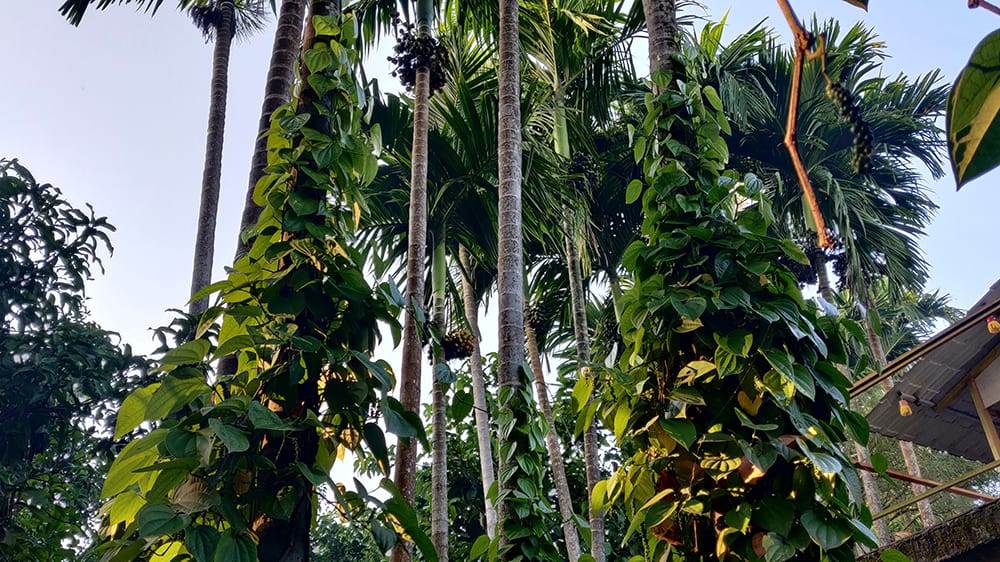
You can always let some vines climb up high as they are also food for birds and other insects around 🙂
Harvesting & Storage: Essentials for going from green to black!
Under ideal conditions, the first harvest can be expected in 3 to 5 years.
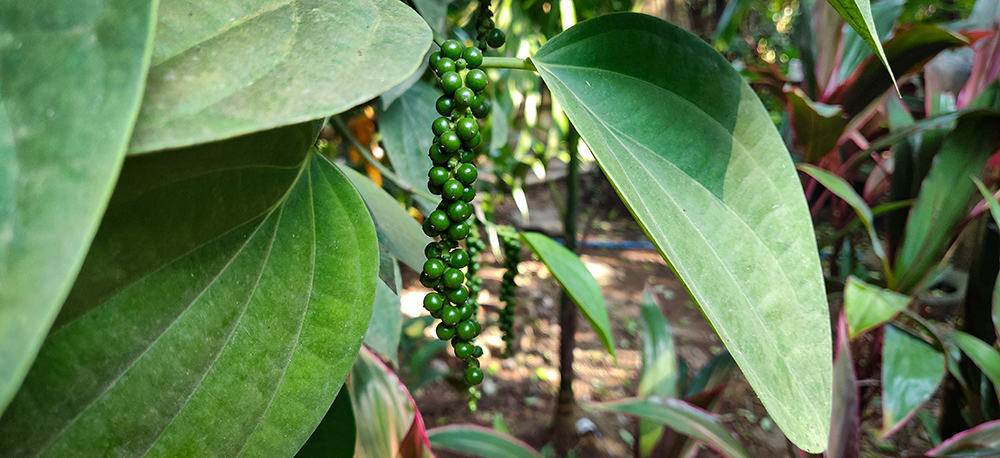
The peppercorns form in clusters and one can consume them directly in this stage once they start to appear mature (glossy).
They can be preserved in brine or vinegar as well at this stage.
The drupes are harvested when at least one single fruit (peppercorn) is ripe and red in color and the rest of the drupe is still green.

Basically, right before they reach the red stage as for making the signature black pepper that we know, it needs to be harvested when the fruits are just barely starting to mature.
The peppercorns are separated by hand and cleaned for any spider webs and insect presence.
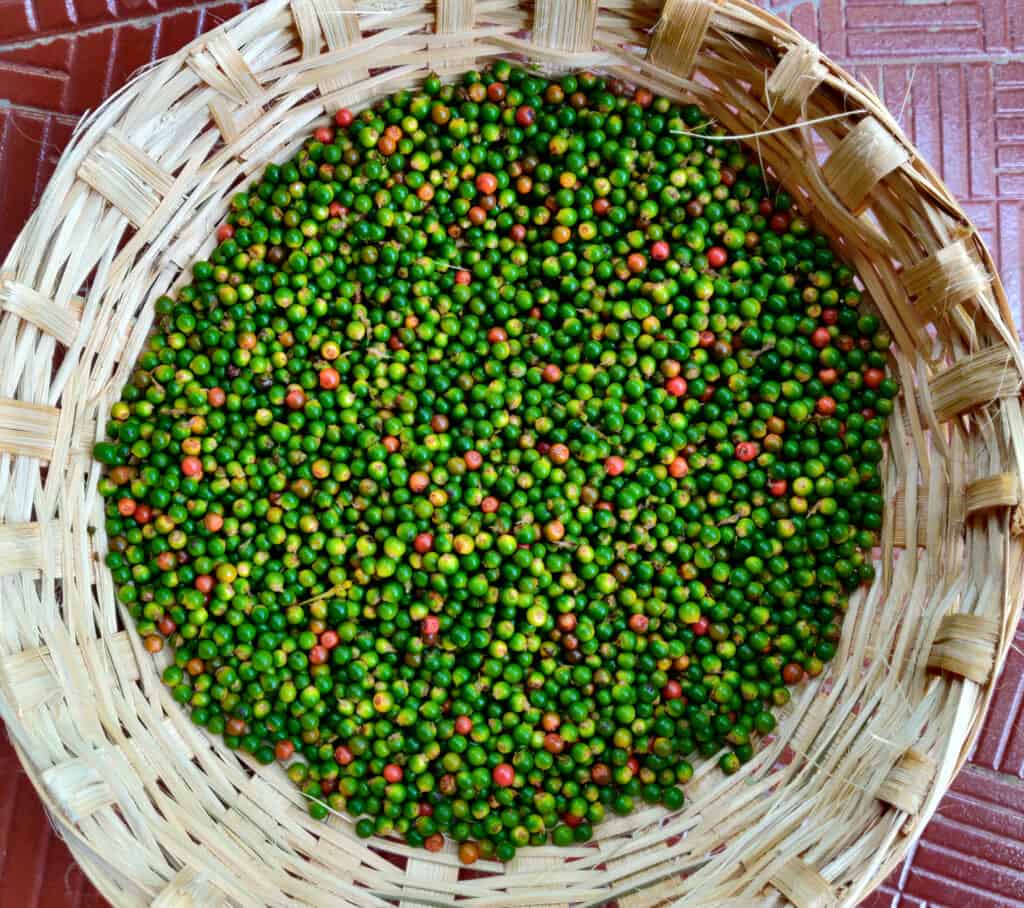
Drying Black Pepper
You can sun dry them or put them in a food dryer post this, and they are ready for storage, however, the traditional process involves blanching them a bit before drying to attain the signature black color and to improve the flavor, color and scent.
To blanch, tie them in a clean muslin cloth and dip them in boiling water for 5 – 6 mins. The color quickly changes from green to brownish and olive green shades.
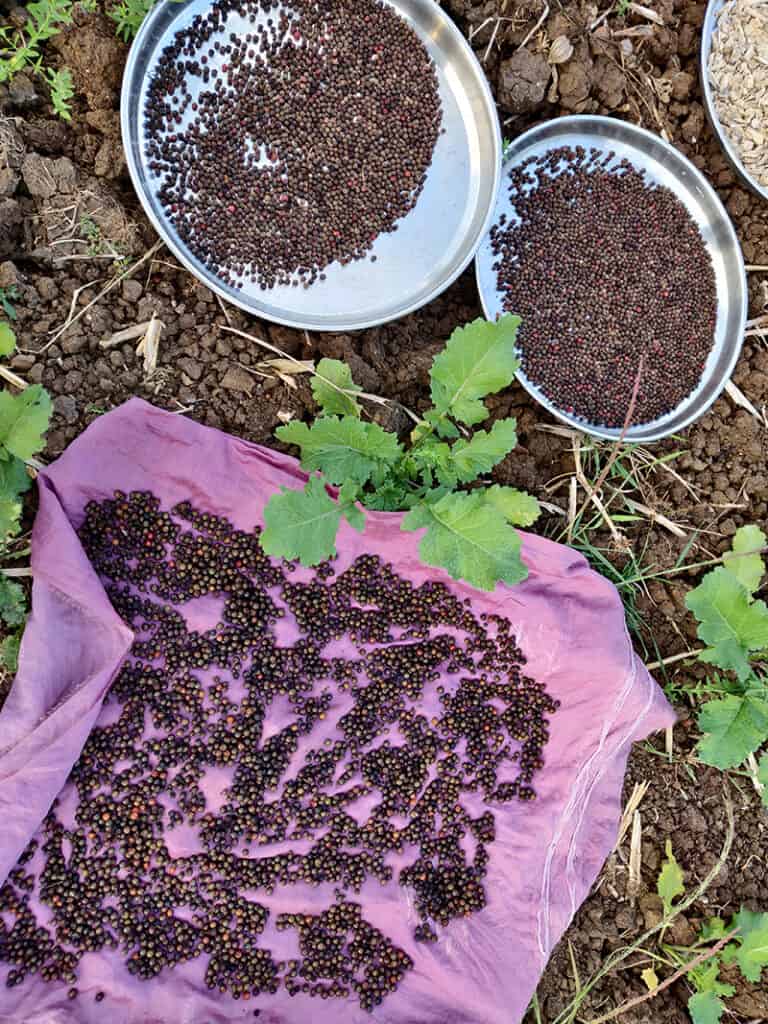
Drain the water and spread them on a tray or cloth and dry them in sun. Ensure the corns are spread out with minimum overlapping for quicker drying.
Raking them every 2 to 3 hours for the initial 2 to 3 days, will help prevent sticking, encourage quick drying, and eliminate the risk of mold formation.
The drying period will differ based on the availability of sun and humidity, they will dry faster in 2 to 3 days in a dry sunny region.
When to stop drying?
When they start appearing shiny black and hardy enough. You can crush a few from your batch with a stone. Check if it breaks and crumbles, then it’s ready, if it appears soft and sticky, you need to dry them for a longer duration.
You can store them in an airtight container and they will be fine for the upcoming 2 to 3 years!
Tip: please ensure that your hands and all equipment are cleaned before touching the peppercorns.
White Peppercorn Harvesting
You can simply wait for the drupe to ripen and peel the skin off individual fruits, the seed is white inside, and once sun-dried, you get white peppercorns.
You can even eat this skin while removing, its sweet with a hint of spice, a unique taste of its own indeed!
Consumption Tip: always crush fresh peppercorns prior to use for the best flavor experience, do not crush and store them.
Closing Regenerative Takeaway
Black Pepper has the potential to add diversity to monoculture zones by encouraging multilayer farming, especially fruit orchards.
The low-maintenance nature helps convince monoculture zones and marginal farmers to give it a try as there will be minimal additional costs involved.
It’s a high-value yield and carries good market value, thus can help small-scale farmers sustain themselves financially.
The fruits attract birds and the foliage helps create microclimate zones around trees which can help reduce the frequency of irrigation and maintain humidity under the canopies.
The vines look great and can be used as an alternative to other beatification plants which do not obtain any yields, especially in public spaces and private landscape designs.
Make some space for it in your garden then!
Actually don’t; just stack them up in between 😉





